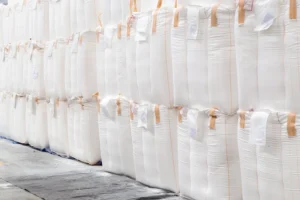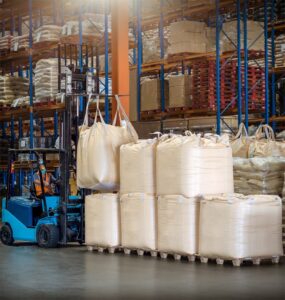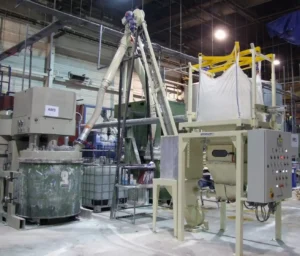2. Transfer maximum energy
3. Stretch the bulk bag
4. Removes the angles of repose
Bag Stretch for Improved Bulk Bag Densification
When using the Spiroflow Cone Table Elite Bulk Bag Filler, a bulk bag still typically spends 50% of the filling cycle hanging from its loops which promotes stretching of the bag. As a bag stretches during filling, volumetric efficiency increases. A stretched and densified bulk bag will not slump and will hold more product. Additionally, due to the unique design of the Cone Table, bag stretching is also improved during the periods of densification.
In other densification methods, bulk bags are not hung by their loops during filling; the introduction of a vibratory filling deck or table means that the bag maintains contact / is sitting on the table through the cycle, preventing the bag from stretching.
Don’t Sacrifice Speed for Best-in-Class Bulk Bag Densification
When it comes to bulk bag densification, many traditional systems will result in a significantly slower fill cycle due to the time it takes the machine to allow material to settle and stabilize. Because of the unique design of the CTE filler, fill rates of more than 40 bags per hour can still be achieved on a semi-automated bag filling line.
No More Unsafe, Unstable Bags
When a bulk bag is properly stretched during filling and the material is deaerated with a flattened angle of repose for a flat bag top, the result is a very safe and stable bag. Learn more about how the cone table on our CTE Bulk Bag Filler can deaerate your material or fill out the contact form below with questions.





